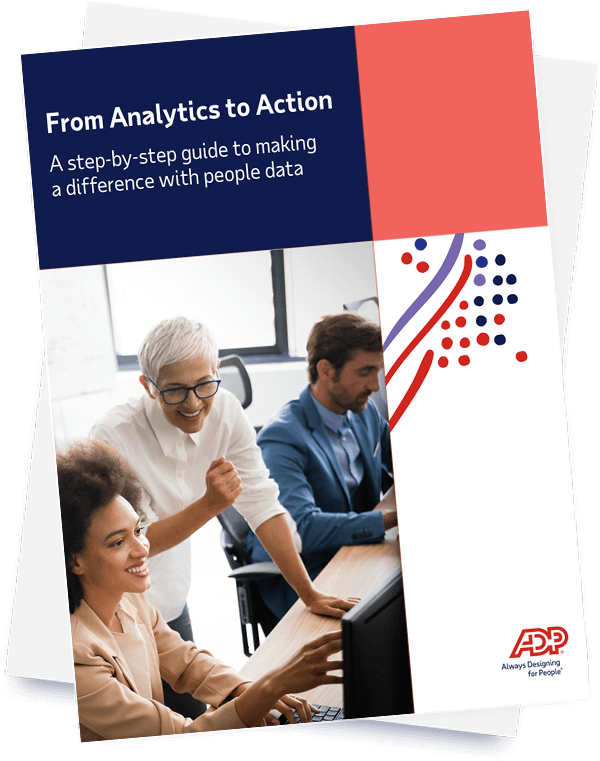A step-by-step guide to people analytics strategy
You may be used to relying on data to answer questions, but when it comes to determining the best course of action for your organization, you need the context behind the insights. Our Assess, Plan, Act, Measure (APAM) approach, as first explained in the People Analytics Handbook, can help you see a more complete picture of what’s happening and develop creative and effective solutions to broad HR problems. Here, we explore how APAM can be applied to specific challenges, like limiting turnover or advancing diversity, equity and inclusion (DE&I) initiatives.
Step 1: Assess the problem
If you're concerned about turnover, dig into as much detail as your tools and data can provide to understand the root cause of problems. It may be helpful to benchmark your business against similar organizations in your industry or geographic area. Also talk to department leaders and ask them what they think is happening. If they aren't sure why people are leaving and no one is offering useful information in exit interviews, it may be worth contacting some former employees to learn more.
Step 2: Plan your strategy
Consider what matters most to your current employees and prospective talent – short commutes, access to child care, hybrid work environments, etc. If a policy change is warranted, make sure that it fits with what the organization is trying to accomplish and that stakeholders are on board. Key performance indicators may be needed during the approval process to assure leaders that resources will be used appropriately and that success can be measured.
Step 3: Act on your plan
Having a great project manager is key to putting your plan into action. Find someone who understands the work, is good at helping people meet deadlines and can facilitate communications on the team to eliminate obstacles along the way. And if your plan alters an existing workplace policy, make sure you track the necessary analytics. You may see changes in metrics, like time to fill, sources of hire, compensation, pay equity and workforce demographics.
Step 4: Measure success
If the analytics reveal that voluntary turnover is not decreasing, stop and assess the situation. Is a tactical adjustment necessary or do you need a new plan altogether? In either case, don’t forget to adjust what you measure and stay on top of what’s possible with your analytics tools. As new analytics are rolled out, you will also have new views and perspectives on what is happening in your organization.
To see how the APAM approach can be applied to your DE&I initiatives, download our guidebook.



